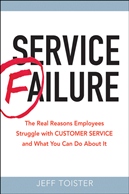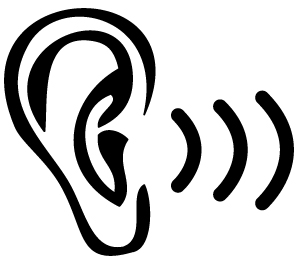Why the customer isn't always the top priority
 Jeff Toister
Jeff Toister  Tuesday, December 4, 2012 at 7:14AM |
Tuesday, December 4, 2012 at 7:14AM | Here’s the scene… You are placing your order at a fast food counter when someone suddenly interrupts you to declare a ketchup emergency.
“Can I get some ketchup?” the other customer asks frantically. They physically crowd the counter space, by-passing the line and wedging themselves into the scene to ensure their emergency takes top priority. In almost every case, the cashier stops taking your order and turns to help the other person.
Why does this happen?
There are two reasons. First, the ketchup person is rude. Not rude in a deliberate, “Step aside for the great ketchup king” kind of way, but rude in a “I have a ketchup emergency and I’ll die if I don’t get some ketchup right now” kind of way. They get tunnel vision and they just don’t consider you in their moment of panic.
The second reason has to do with how people pay attention. Without the proper training and awareness, most cashiers will unthinkingly respond to the ketchup emergency before completing your order.
How do we pay attention?
Our brains can focus our attention through two primary ways. One is called top-down and the other is known as bottom-up. Top-down attention involves consciously focusing our mind on a task, conversation, or thought. Bottom-up attention comes from external stimuli such as a loud noise, something visually catching your eye, or something touching you.
In the short run, bottom-up attention will override our concentration if the stimulus is strong enough. This is a human instinct that helps us recognize danger.
Let’s go back to the cashier in our ketchup emergency scene. The customer looking for ketchup captured their attention through bottom-up stimuli by talking in a loud, frantic tone and making themselves seen by physically crowding the space near the cash register. It's human instinct for the cashier to momentarily stop paying attention to you and notice the ketchup person.
It’s the next step that’s the cashier’s choice.
What the cashier does depends on whether or not they have a clear sense of priority. If the current customer is the top priority, then the cashier will utilize top-down attention to politely ask the ketchup person to wait and refocus on taking your order.
If no priority has been established then the cashier will most likely help the ketchup person. Why? Because we tend to follow wherever our bottom-up attention takes us unless we have a deliberate intent to focus on something else. The ketchup person will cause the cashier to instinctively pay attention for an instant, but without a conscious intent to refocus on your order, the cashier’s attention will remain with the ketchup person until the task is complete.
What can we do about it?
The best way to help your employees avoid situations like this is to establish clear customer service priorities.
I recently did a training exercise with a group call center agents where I asked training participants to list their priorities. Universally, they said the person on the phone was the top priority over instant messages, questions from co-workers, or emails. Once they learned about top-down versus bottom-up attention, they decided to limit distractions while they were on a call.
The results of their experiment were overwhelmingly positive. Just by taking the small step of concentrating on the caller as a top priority, they started paying more attention to their customers' needs. This, in turn, helped them identify more opportunities to serve their customers at a higher level.
If you’d like to read more, I’ve written a few other blog posts about how our brain pays attention. Chapter 7 in my book, Service Failure, is also devoted to this topic.
- Why multitasking hurts customer service
- Listening to customers is harder than you think
- Why customer service isn't always obvious
 Jeff Toister is the author of Service Failure: The Real Reasons Employees Struggle with Customer Service and What You Can Do About It. The book is available in paperbook, e-book, and audio book formats.
Jeff Toister is the author of Service Failure: The Real Reasons Employees Struggle with Customer Service and What You Can Do About It. The book is available in paperbook, e-book, and audio book formats.
You can learn more about the book at www.servicefailurebook.com or a copy on Amazon, Barnes & Noble, or Powell's Books.





